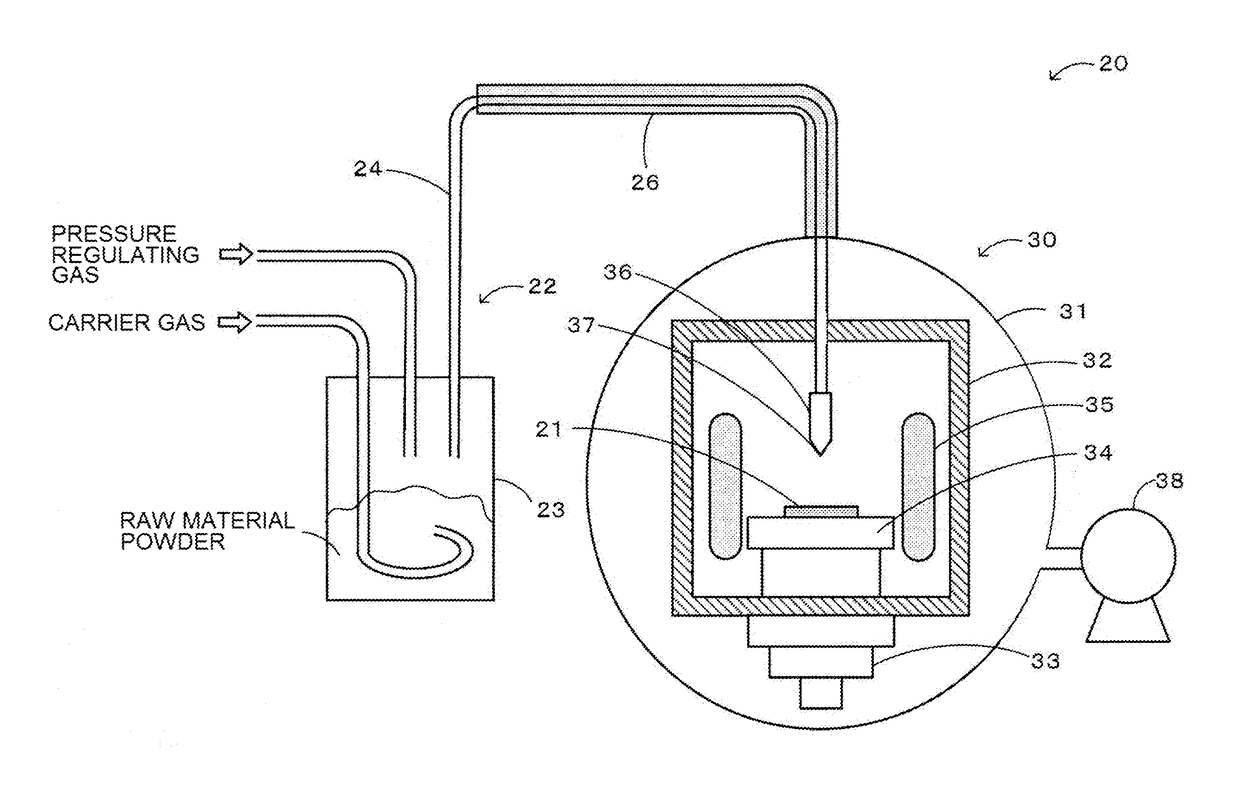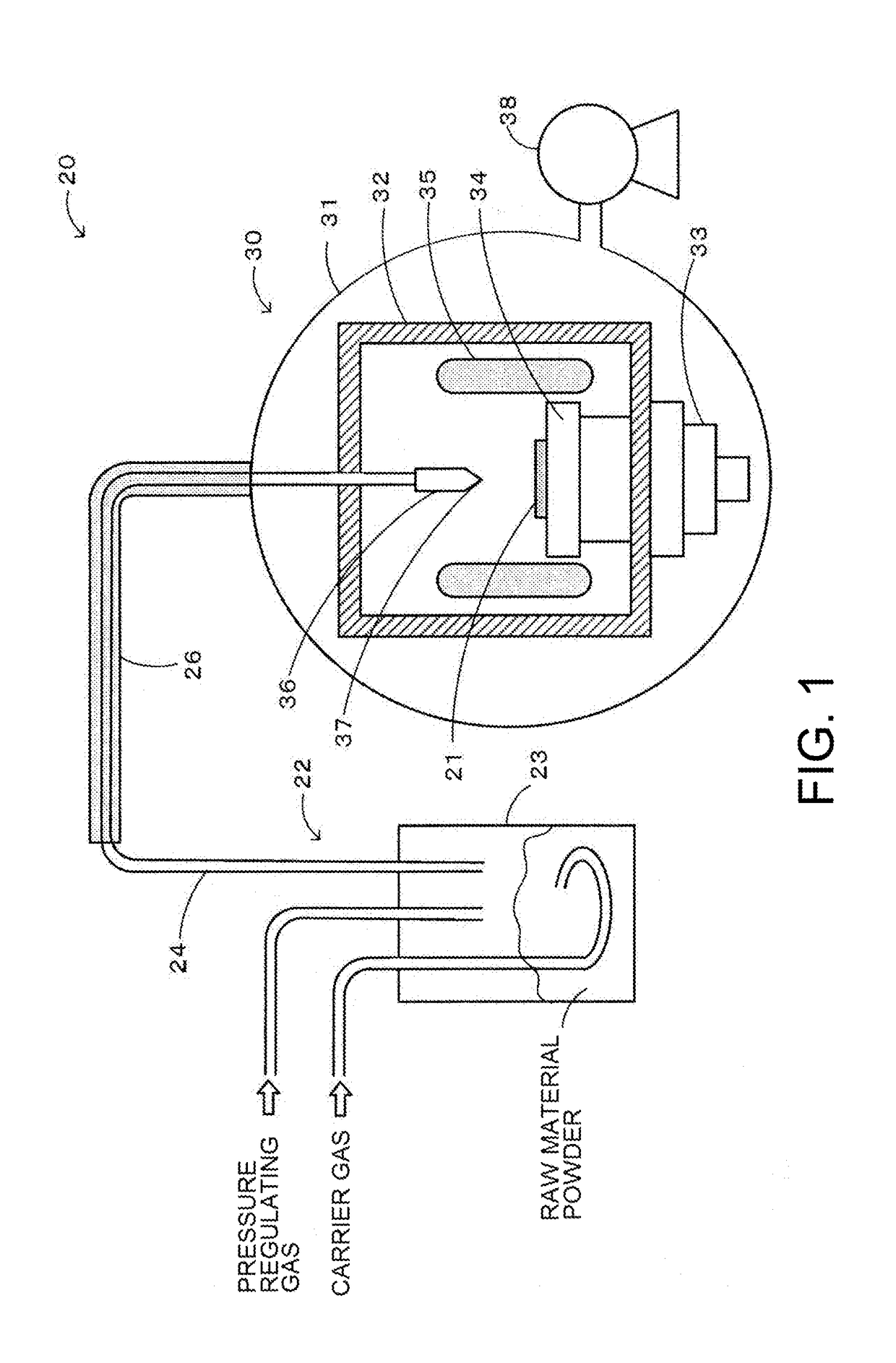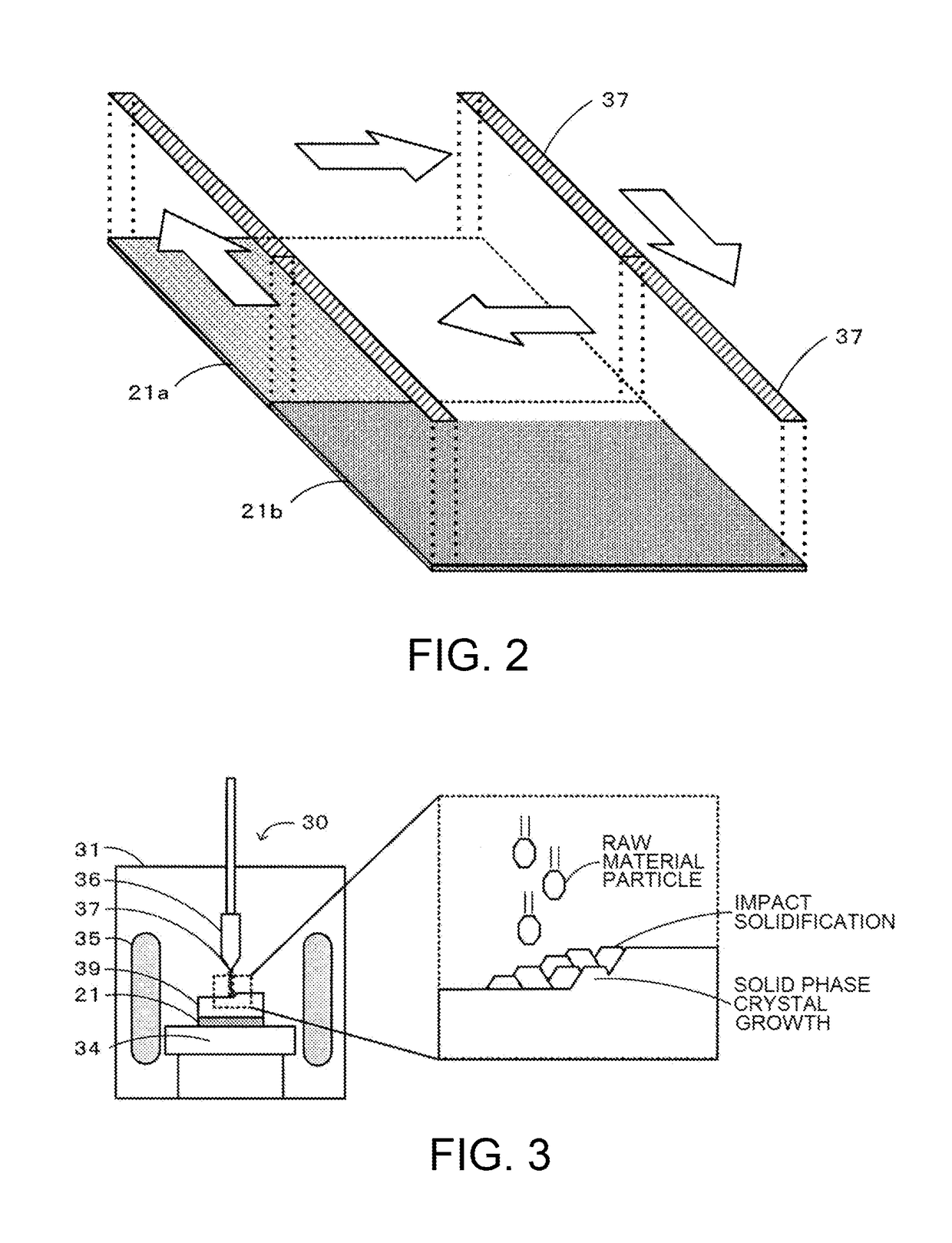Method for producing zinc oxide single crystal
a single crystal, zinc oxide technology, applied in the direction of crystal growth process, polycrystalline material growth, coating, etc., can solve the problems of low productivity, difficult high-concentration doping required for controlling electrical properties, and general low reproducibility of film formation, etc., to achieve high productivity and reproducibility. , the effect of stabl
- Summary
- Abstract
- Description
- Claims
- Application Information
AI Technical Summary
Benefits of technology
Problems solved by technology
Method used
Image
Examples
example 1
(1) Preparation of Zinc Oxide Powder and Evaluation of Dopant Content
[0055]Zinc acetate dihydrate (manufactured by Kishida Chemical Co., Ltd.) and aluminum nitrate nonahydrate (manufactured by Kishida Chemical Co., Ltd.) were dissolved in Milli-Q water (ultrapure water) such that the total molar amount of Zn and Al was 0.2 M. At this time, the molar ratio between Zn and Al, i.e., Zn:Al, was 99.7:0.3. To the solution obtained in this way was added cetyltrimethylammonium bromide (CTAB) (manufactured by Kishida Chemical Co., Ltd.) to give a concentration of 0.1 M. This mixed solution was heated at 180° C. for 6 hours in an autoclave to produce a powder. The produced powder was calcined in air at 600° C. for 12 hours to grow particles having a volume-based D50 average particle diameter of 2 μm. Identification of the crystal phase of the resulting powder using X-ray diffractometry (XRD) resulted in a ZnO single phase. The Al content (i.e., the amount of Al forming a solid solution) in th...
example 2
[0062]Preparation and evaluation of a zinc oxide powder and a zinc oxide single crystal sample were carried out as in Example 1 except that the molar ratio between Zn and Al, i.e., Zn:Al, was 99.9:0.1 and the CTAB concentration was 0.03 M. The Al and Br contents of the raw material zinc oxide powder were 0.09 at % and 0.04 at %, respectively, and the raw material zinc oxide powder had an a-axis lattice constant of 3.2492 Å and a c-axis lattice constant of 5.2060 Å. The resulting zinc oxide single crystal had an XRC half-width of 100 arcsec, showing high crystallinity. The Al content (i.e., the amount of Al forming a solid solution) was 0.09 at %, and the Br content (i.e., the amount of Br forming a solid solution) was 0.04 at %. Measurement of the lattice constants of the single crystal sample resulted in an a-axis lattice constant of 3.2491 Å and a c-axis lattice constant of 5.2067 Å. Regarding the evaluation of film formation reproducibility, a film thickness of no less than 0.1 m...
example 3
[0063]A zinc oxide powder having a volume-based D50 average particle diameter of 0.5 μm (manufactured by Kojundo Chemical Lab. Co., Ltd., purity of 4 N) and high-purity γ-Al2O3 powder (AKP-GO15 manufactured by Sumitomo Chemical Co., Ltd.) were mixed in a pot mill for 24 hours using water as a solvent and alumina balls in a way such that the molar ratio of Zn and Al, i.e., Zn:Al, was 99.7:0.3. The mixture was dried and then heat-treated at 1400° C. for 5 hours. The resulting powder was roughly crushed by a mortar, and then pulverized by a ball mill using alumina balls to give a volume-based D50 average particle diameter of 2 μm. Identification of the crystal phase by X-ray diffractometry performed on the resulting powder as in Example 1 resulted in a ZnO single phase. Also, the Al content in the powder measured by a method similar to Example 1 was 0.29 at %. Measurement of the lattice constants of the powder resulted in an a-axis lattice constant of 3.2462 Å and a c-axis lattice cons...
PUM
| Property | Measurement | Unit |
|---|---|---|
| temperature | aaaaa | aaaaa |
| particle diameter | aaaaa | aaaaa |
| particle diameter | aaaaa | aaaaa |
Abstract
Description
Claims
Application Information
 Login to View More
Login to View More - R&D
- Intellectual Property
- Life Sciences
- Materials
- Tech Scout
- Unparalleled Data Quality
- Higher Quality Content
- 60% Fewer Hallucinations
Browse by: Latest US Patents, China's latest patents, Technical Efficacy Thesaurus, Application Domain, Technology Topic, Popular Technical Reports.
© 2025 PatSnap. All rights reserved.Legal|Privacy policy|Modern Slavery Act Transparency Statement|Sitemap|About US| Contact US: help@patsnap.com



